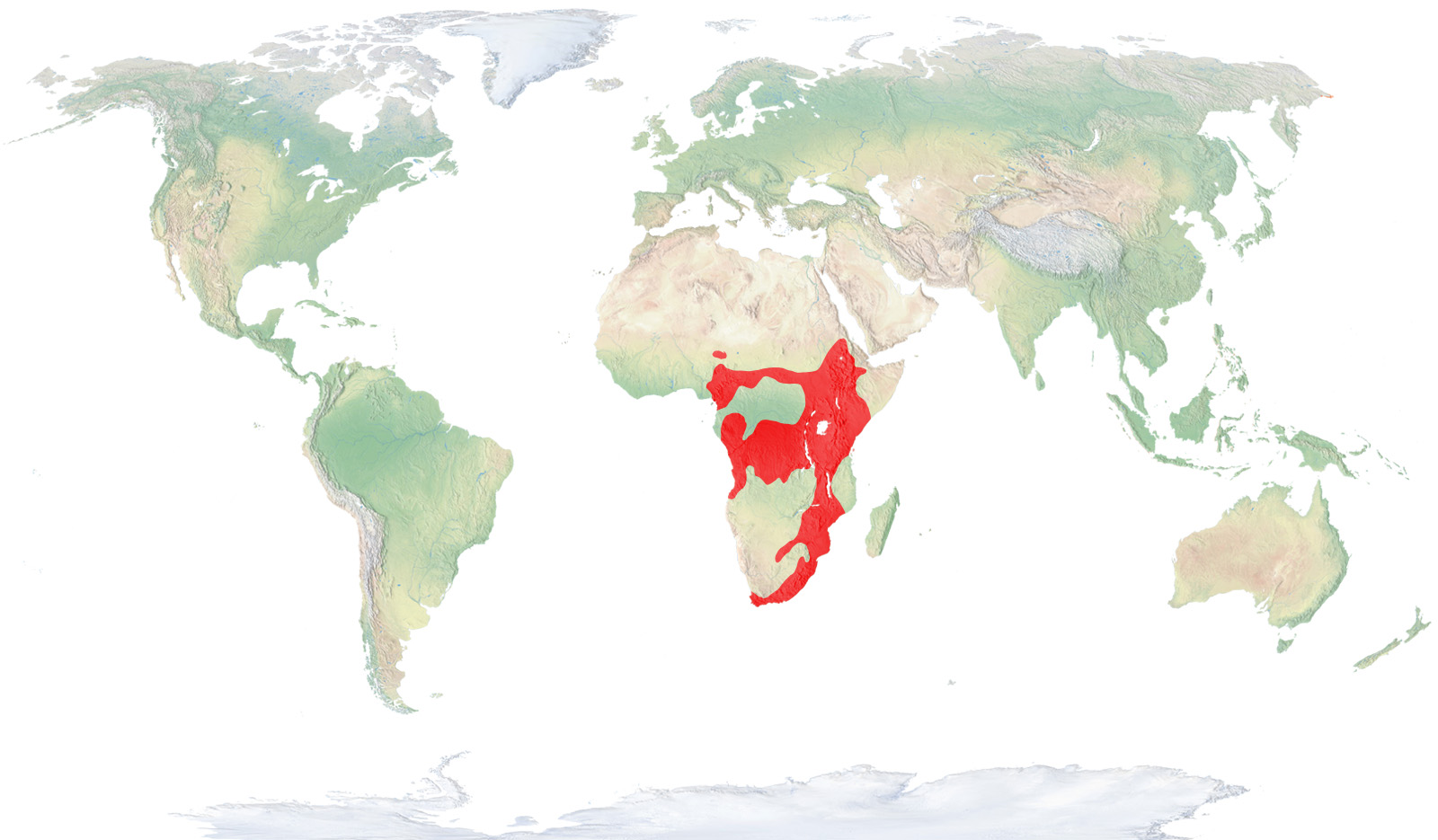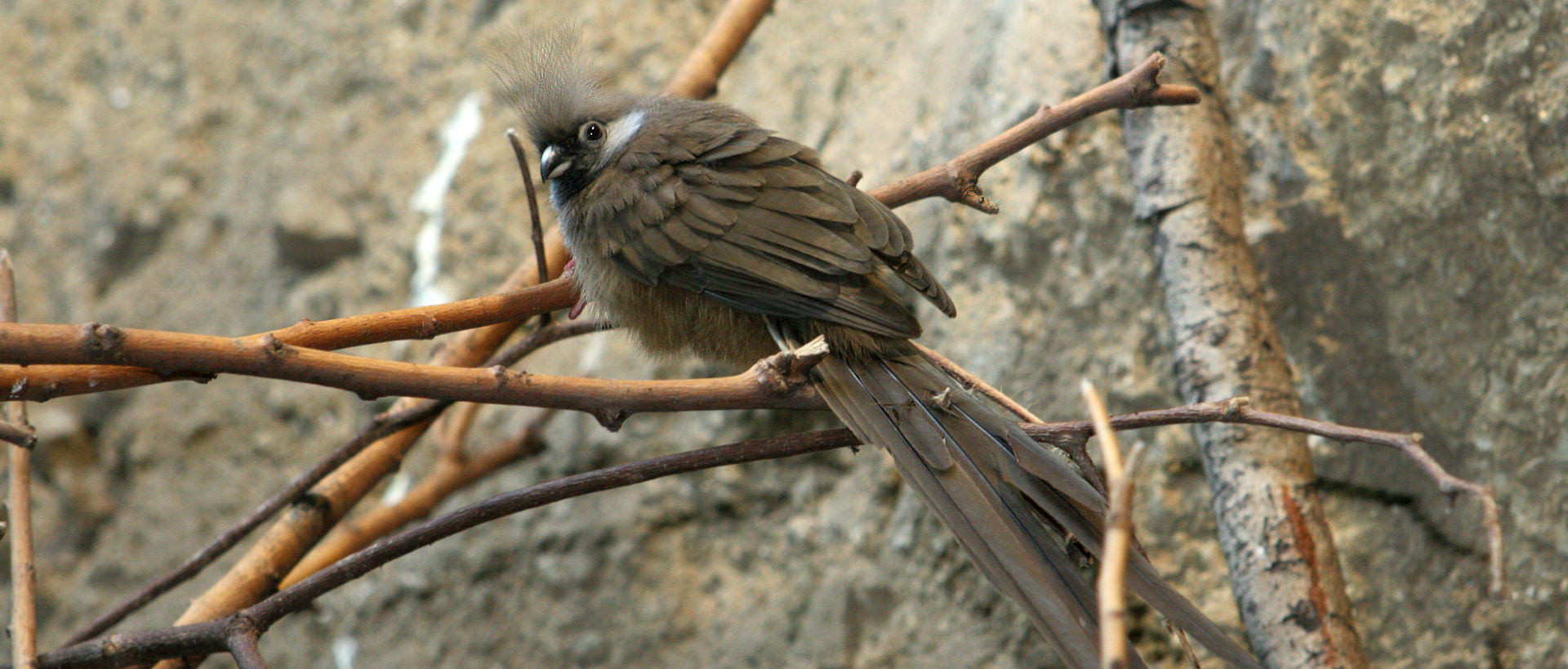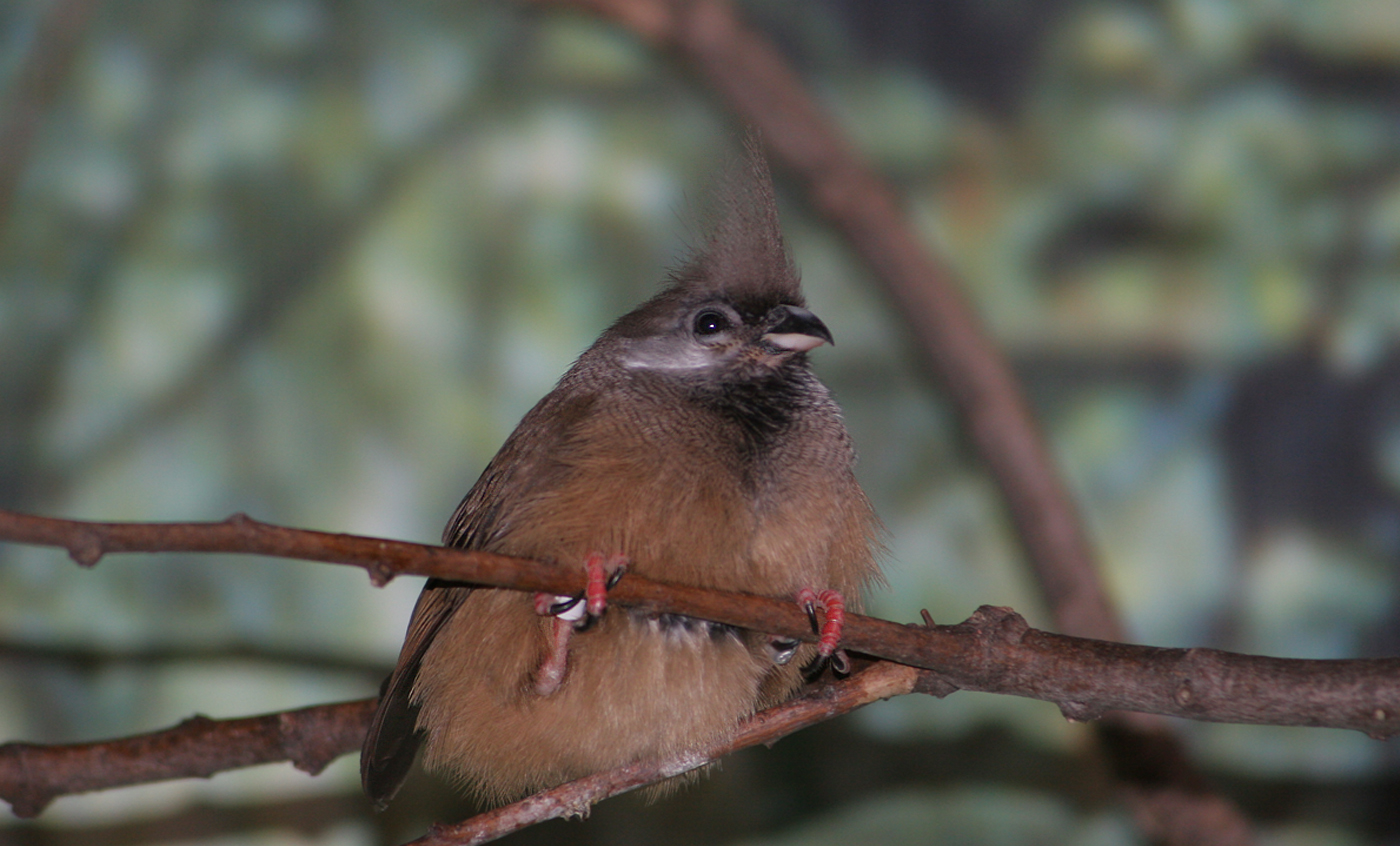Speckled mousebird
The speckled mousebird is easily recognisable for its long tail and the crest on its head. It is a tree-dweller and is found in the densest parts of scrubland and fruit trees in gardens. It is fairly common and very gregarious. It eats shoots, fruit and berries, which it often reaches by hanging upside-down.
Natural habit
East to south-east Africa.

- Distribution / Resident
- Breeding
- Wintering
- Subspecies
Risk level
- Extint
- Extint in the wild
- Critically endangered
- In Danger
- Vulnerable
- Near threatened
- Minor concern
- Insufficient data
- Not evaluated
Taxonomy
Physical characteristics
Biology
Reproduction
Biology
The speckled mousebird has brown plumage on its back, a yellowish belly and a long and narrow tail over 20 cm long. The beak is grey and curved, the eyes dark, the cheeks light, with a noticeable crest of light feathers atop its head.
It owes its name to the odd way it scurries along tree branches, grabbing on with its toes in difficult positions thanks to the layout of its toes, facing both forward and backward, very similar to parrots' toes.
They are distributed in central, eastern and southern Africa, from southern Ethiopia and Somalia to Democratic Republic of Congo and Angola in the west and to the southernmost part of South Africa.
They inhabit savannahs and the edges of jungle regions, from sea level and up to a 2000 metre altitude in mountainous regions.
A very social species, they travel in large groups searching for food, primarily fruits and, to a lesser degree, leaves, tender shoots, flowers and nectar from different plant species.
They mate and are monogamous and other individuals help the pair with the whole breeding process. Both members of the couple incubate the two or three eggs that the female lays and both the parents and helpers feed the chicks that are born after 10 or 11 days of incubation.
This species is sedentary, only making short seasonal movements.
This species is still very common in many regions of its large area of distribution.




